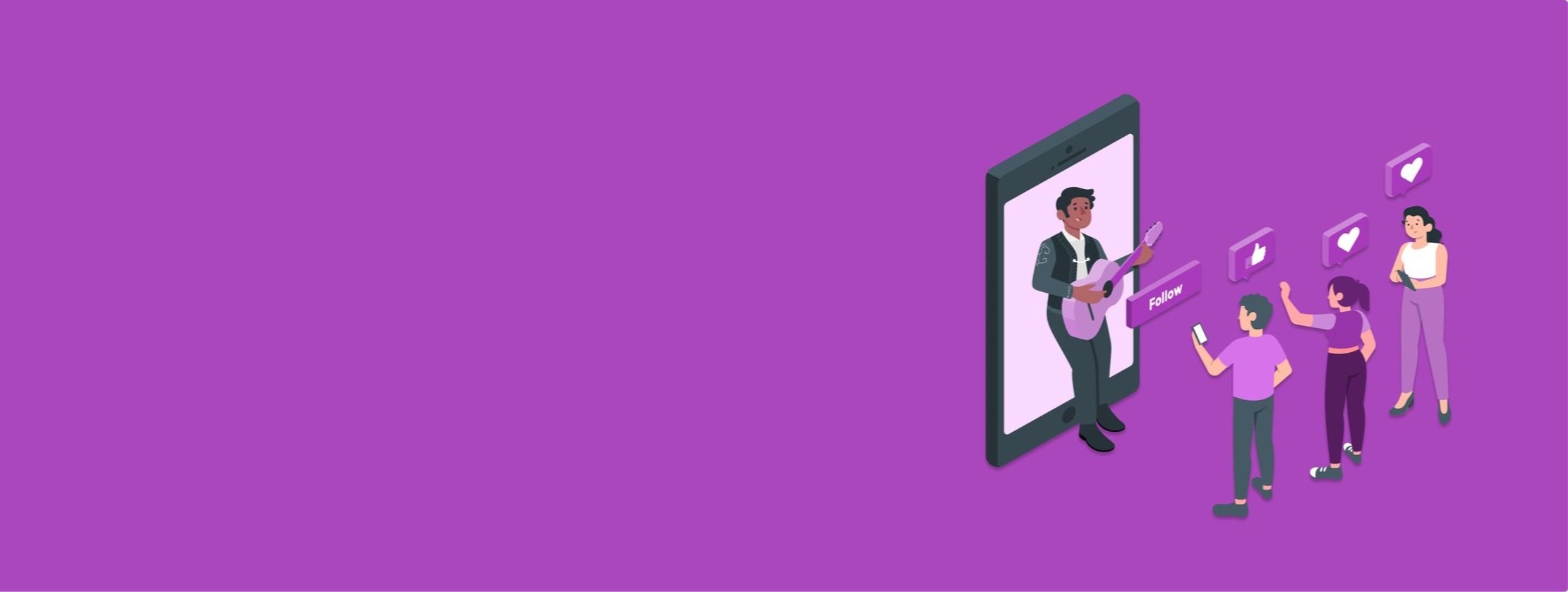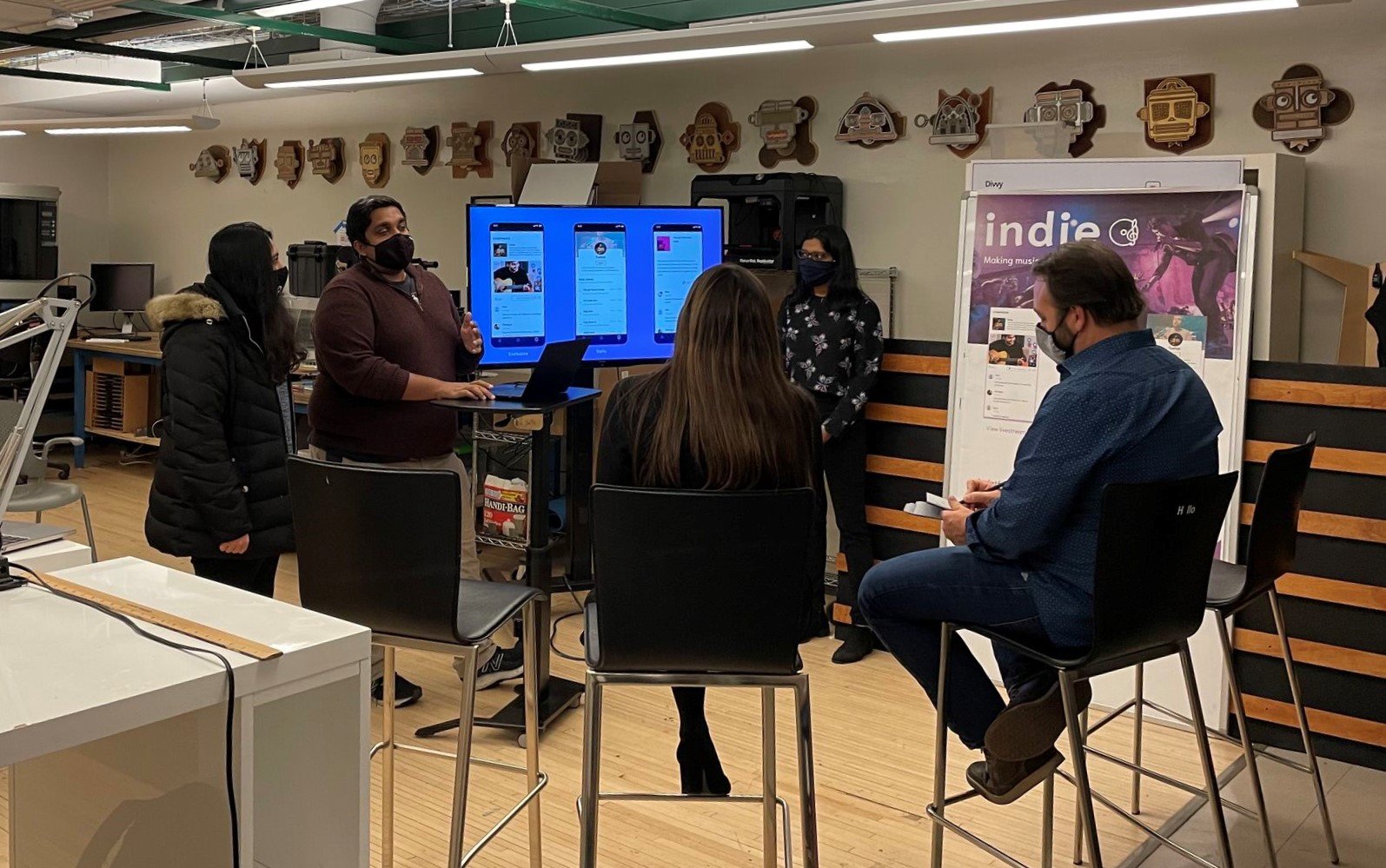
Connecting Independent Indian artists and music fans
Indie: Digital Service Innovation
Timeline
7 weeks, Fall 2022
Role
Service Designer, UX/UI Designer
Team
1 Product Manager, 2 UX Designers, 1 UX Researcher
Tools
Figma, Google Suite, Notion, Adobe CC, Pen & Paper
Project Context
The brief was to transform a start-up idea into a feasible and testable MVP that addresses a current gap in the market. By using the lean start-up methodology and design thinking, my team innovated a new digital service that is not only economically feasible but also responds to the current gap in the Indian music market.
What did I do?
I was the UX/UI Designer and Team Coordinator. I was responsible for the UX of the mobile application and led weekly team meetings.

THE PROBLEM
Indian Americans are looking for a deeper connection with India and Indian music, beyond mainstream Bollywood. At the same time, independent Indian musicians are looking for new fans across the globe.
Currently, there are no platforms that meet the needs of both: music listeners and musicians.
THE SOLUTION
Indie is a platform that creates a community for Indian Independent music artists and their fans.
Users can engage with music in a more meaningful way and have access to exclusive content and events from their favorite artists. Music artists have the ability to share their music with a growing and appreciative new market.

Initial Research
The Original Concept
Indie (originally known as True Lyric) was a service pitched by my teammate Tushar. The idea originated from watching Bollywood movies with friends and realizing they didn’t understand the songs in the movie. A translation service was an idea that came naturally from conversations with users.
Untapped revenue potential in the growing global Indian diaspora
To validate the service idea, we did a PESTLE analysis to understand the potential market size and to verify if the problem was real for our potential users. The Political, Economic, and Social factors in particular made the value proposition and potential market size very compelling.
Speaking to users
Our user research consisted of 16 user interviews with primarily Indian American young adults aged 18-30. We asked them about their thoughts on our service idea and their willingness to pay.

Creating the MVP
We created a value flow model to better understand exchange of resources between stakeholders.
The model also helped us validate our business model and consider new revenue streams (like revenue from streaming apps, referral fees, and advertisements) when interviewing potential users.
The purpose of our MVP was to seek validation on our idea.
At this stage we wanted to know two things: if users saw value in this service and if they would pay for it.

Pivot to MVP 2
We pivoted from a lyric translation service to a platform that builds a community between Independent Indian artists and their music fans
Our interview learnings did not validate our MVP 1 idea; however, our learnings presented a new opportunity - the need for Indian Independent artists to connect with fans and vice versa.
In MVP 2, we transitioned to a freemium model where we would receive revenue from premium users and advertisers (including independent artists), while providing a curated experience to free users.
Our MVP 2 consisted of an interactive prototype that showcased features unique to Indie and allowed our users to understand the interaction experience with Indian artists. We hoped to get validation on this new idea and wanted to know if users saw more value in this service and if they would now be willing to pay.

Final Solution
Based on the insights from our MVP 2 we refined the concept and design of Indie.
Our final solutions addresses many of the concerns expressed by our users; including further differentiating Indie from other competitors and ensuring that the app features provided greater incentives for users to become premium members.

Showcase & Reflection
Our project culminated in an investor pitch. This was an opportunity to test whether our problems and solutions resonated with a group of 14 investors.
We found that they asked similar questions:
How can we leverage new and emerging technologies to solve the same problem (NFTs) ?
What differentiates us from our competitors? Keep in mind new reference competitors and business models to consider (Patreon).
What areas we would focus on (or obstacles we would encounter) next if we did get the desired funding?
Reflection & Takeaways
This project not only gave me the opportunity to use the design skills I had but also to learn more about product management and the business side of a digital service.
Learn to pivot quickly
The biggest takeaway for me was learning what it means to genuinely put in minimum effort to receive maximum validated learnings from customers. It was also a great lesson in learning how to pivot quickly based on our learnings. Ultimately, the earlier you pivot, the less you invest into the wrong idea.
Presentation is key
The investor showcase along with the assignments and class crit sessions taught me how important it is to present and communicate my ideas clearly. Even if we spent a lot of effort and time in a specific aspect of our service, it didn’t matter unless we were able to effectively communicate it to our users and investors.
If you enjoyed this case study, check out my other projects!









